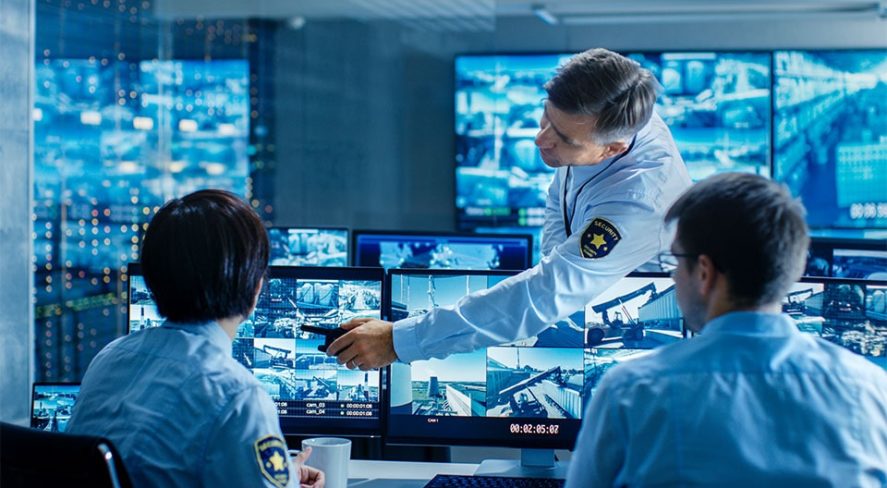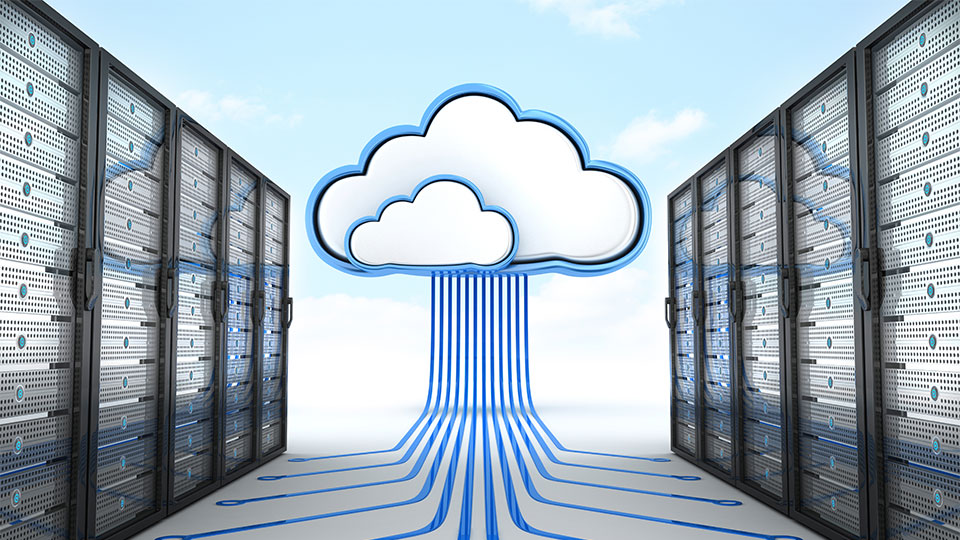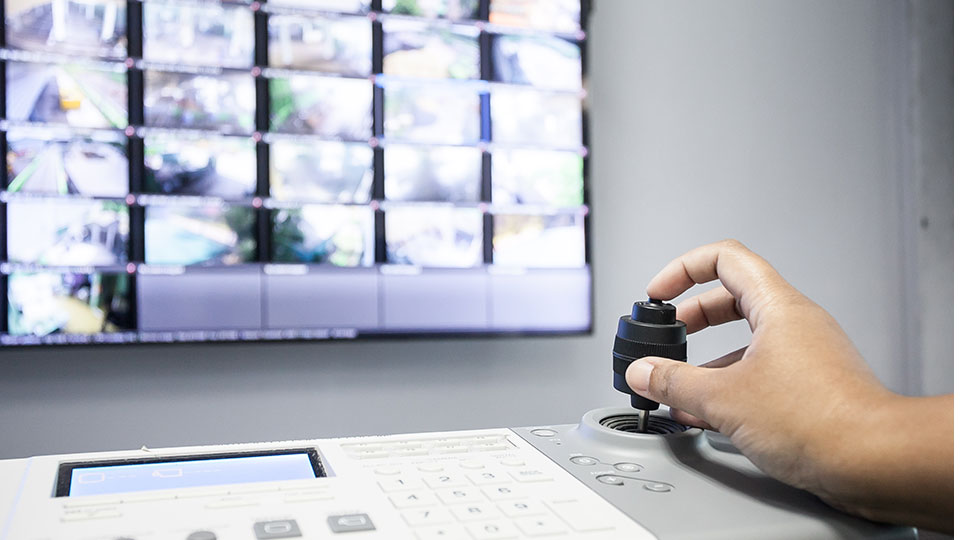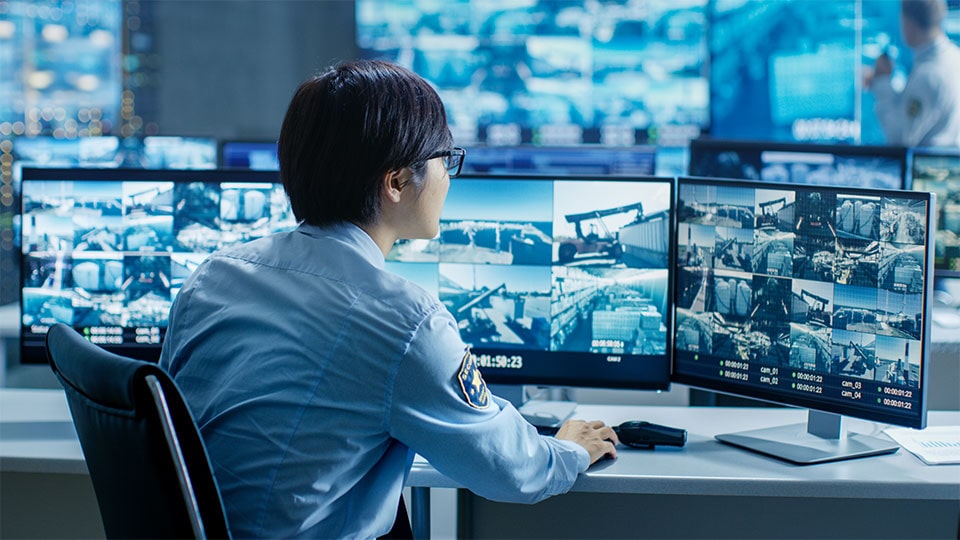A Guide to Video Management Systems and Key Solutions They Provide

Beyond improvements in media storage and accessibility, video management systems offer customers a range of customizable software solutions, powered with standards-based technologies that are interoperable with various physical safety and security devices.
This guide provides an outline for thought when analyzing system types and design for management of network security cameras.
Video Management System Types
- Cloud
- Edge
- Network Video Recorder
Cloud System Storage

Cloud system storage offers effective off-site, third-party video management solutions for users, especially those who do not have the requirements or available budgets for in-house upkeep. There are multiple service options and tiered pricing structures to accommodate ranges in necessity.
Advantages and Applications
Cloud-based systems offer simple and scalable storage plans, with offerings to accommodate variations in system size, without having to maintain related infrastructure or dedicated staff, for storage needs.
Risk is reduced at locations where on-site stored video failure, or vandalism, is considered.
Disadvantages and Considerations
Network limitations can affect quality of service. For higher-security environments, being housed in a cloud environment may present policy challenges.
As these systems grow, naturally they may graduate from the limitations of some of the cloud-based services and may need in-house support instead. Similarly, increases for software licenses of additional cameras would be a consideration during system expansion.
Edge Systems

Edge recording-based video management systems function primarily by relying upon local storage on-board camera devices, which are deployed in the surveilled environment. Additionally, the method eliminates the use of centralized recording storage of surveillance footage on servers. Also integral for edge recording systems to operate with full user functionality are network-connected video streams for active monitoring. Access to live images allows for system management, surveillance and live data analysis for related monitoring events and alarms. Those systems employ software tools which also reduce computing hardware needs, as many of the systems rely upon web or cloud-based infrastructures.
Advantages and Applications
Minimal staff needed to maintain the video management system. Cost reduction in those associated with building, servicing and maintaining infrastructure required for storage and system tools.
Distributed or remote locations where static video shots are common and systems with staffing limitations. Smaller retail spaces, small office environments and homes are all areas ideal for edge systems.
Disadvantages and Considerations
As is the nature of distributed field devices, video stored locally runs risks of tampering, vandalism or individual device failure. Also to consider is latency related to typical service issues common with unmanaged internet speed and or cloud functions.
Factors to consider when implementing edge systems are responsiveness lags during time-sensitive situations, such as network issues or off-site providers traveling to perform maintenance.
Network Video Recorders

Network video recorder (NVR)–based systems record directly, via configured network connections from cameras, onto on-premises server-based hard drives, known as NVRs. These camera views are then able to be accessed, both live and asynchronously, by users via accompanying software or a web-based interface, depending on the video management system. These systems are primarily used within large institutions, or expansive campus environments, as well as multiple unified locations, each employing large camera counts. These settings and systems tend to employ dedicated staff that monitor and maintain the systems. This provides on-site professional experts who can maximize system capabilities.
Advantages and Applications
Control and security, of both live and stored media. Live viewing stations with minimal lag, asynchronous review and stand-alone offloading.
Systems designed with large camera counts and IT support services work best with NVR solutions; however, any sized system can benefit from the total control of video that NVR systems offer.
Factors to consider are the inherently large infrastructure of the system, including dedicated IT and networking requirements, and contracted service providers or staffing needed to maintain the entire system’s software and hardware.
Disadvantages and Considerations
Considering reliance upon on-site support, service and maintenance, human resources are required and continuous. The inherently large infrastructure of NVR system design, including dedicated IT and networking requirements, presents another consideration factor.
Typical Features of System Options
- Alarm Detection
- Analytics
- Mapping
- User Management and Investigative Access
Alarm Detection

Alarm detection is a feature often incorporated with video management systems. When alarms are activated, live or recorded video – showing the actual event – is made available to response personnel automatically.
Advantages and Applications
Immediate identification of subjects that penetrate alarm points.
Prioritized locations, such as secure paths of egress, or spaces where high-value items are stored.
Disadvantages and Considerations
False alarms, which, if unresolved, can overwhelm the system and reduce the likelihood of response from first responders.
Advanced Analytics
Advanced analytics, matched with information gathered from video management systems, allow for greater situational awareness, including more robust forensic analysis.
Advantages and Applications
Any installation using analytics benefits from the visual data a video management system provides. Beyond more efficient and immediate ways to detect, identify and track individuals, events and objects, the technology could just as easily allow for specific entry of others who should have access. Among analytics’ long list of capabilities and uses, forensic identifiers can go beyond facial recognition and go further to recognize expression and attitudes – for deeper analysis of countless factors.
Disadvantages and Considerations
With less reliance on human analytical analysis, the technology is not perfect, and errors still occur. However, with more processed information analyzed, the nature of the analytic systems is that they perform better over time.
Mapping

Mapping provides a feature for monitoring staff to accurately identify areas of interest by visually displaying a camera view in relation to a corresponding mapped location.
Advantages and Applications
Response staff can identify activity location more accurately, particularly in complex or distributed building or campus environments. This is especially useful for locations where named descriptions alone may not readily identify locations.
Disadvantages and Considerations
Precise design is essential for accuracy; therefore, a greater level of programming architecture is required.
User Management and Investigative Access

User management is a common feature found with video management systems, and it allows the ability to assign different rights and segment access for individual users and classes of users of these systems. This feature can help ensure video content is kept private and protected and can also be used to help maintain the authenticity and chain of custody of captured video, should it need to be used in a court of law. Some common elements of user management include decisions on who has access to view live and/or recorded video content, delete video content, export or archive video clips and search video.
Providing investigative access is one common consideration when managing users. Systems can be designed to allow administrators and investigators the ability to easily search, play back and archive video from specific cameras, schedule recordings and perform visual audit traces for forensic purposes.
Advantages and Applications
Expanding the functionality and ease of use of recorded video allows security practitioners to add heightened layers of security. Videos can quickly be made available offline for external users. Furthermore, group of cameras can be programmed to offload footage of areas of incident, and specific scenarios for targeted recordings can also be predefined.
Disadvantages and Considerations
Training is required to program review scenarios, and for more complex systems and scenarios, staff may be required to offer technical expertise to reviewers of footage, particularly when a forensic review is being performed by law enforcement and other investigators.
